clustered bellflower
(Campanula glomerata)
Conservation • Weed • Wetland • Description • Habitat • Ecology • Use • Distribution • Taxonomy
|
|
||||||||||||||
Description |
Clustered bellflower is a showy exotic flower. It is native to Europe and Asia and is widely cultivated as an ornamental elsewhere. Although it rarely escapes cultivation, it has done so and is now naturalized across North America. It is uncommon in Minnesota. It is found in forests, woodlands, woodland edges, thickets, grasslands, and meadows, and on roadsides and trails. It grows in dry to moderately moist, often calcareous soil. Clustered bellflower is a 12″ to 28″ (30 to 70 cm) tall, erect, perennial forb that rises on a single stem from a long, horizontal, underground stem (rhizome). The stem is erect and unbranched. It has many leaves and may be sparsely covered with white hairs or almost hairless. Basal leaves are egg-shaped or egg lance-shaped, 2¼″ to 6″ (6 to 15 cm) long, ¾″ to 2¾″ (2 to 7 cm) wide. They are on long leaf stalks (petioles). The blades are heart-shaped at the base and pointed at the tip with straight sides along the tip (acute). The margins are covered with minute, sharp, forward-pointing teeth. The upper and lower surfaces may be sparsely covered with white hairs or almost hairless. Basal leaves are usually wilted by flowering time. Stem leaves are alternate, 1½″ to 5″ (4 to 13 cm) long, and ⅝″ to 1⅜″ (1.5 to 3.5 cm) wide. Lower leaves are on long petioles, upper leaves are stalkless. The leaf blades are oval and broadest in the middle (elliptic), broadest at the base (egg-shaped), or egg-shaped with straight sides (egg lance-shaped). The base of the blade may be straight across (truncate), wedge-shaped, or rounded. The tip of the blade is pointed with either straight or concave sides along the tip. They are otherwise similar to basal leaves. The inflorescence is a solitary, dense, head-like cluster of several flowers at the end of the stem. Sometimes there are also smaller, stalkless clusters in the uppermost leaf axils. Individual flowers are bell-shaped, stalkless, and large, ⅝″ to 1″ (15 to 25 mm) in diameter. There are 5 outer floral leaves (sepals), 5 petals, 5 stamens and 1 style. The sepals are green, awl-shaped or narrowly triangular, ¼″ to ⅜″ (6 to 10 mm) long, and 1⁄32″ to 1⁄16″ (1 to 2 mm) wide. The sepals (collectively the calyx) are fused at the base into a short tube then separated into 5 lobes. The petals are purple, bluish-purple, or blue, rarely white. They are joined at the base into a corolla tube then separated into 5 pointed lobes. The lobes are bent backward and are as long as the corolla tube. The stamens are fused together into a tube into which the pollen is shed. The style pushes up through the anther tube pushing out the pollen. The stigma at the tip of the style has three lobes and protrudes well beyond the corolla tube. The stigma lobes strongly bend backward. The fruit is a round or egg cone-shaped, 3⁄16″ long capsule with numerous small seeds. The capsule is crowned by the persistent calyx lobes. |
Height |
12″ to 28″ (30 to 70 cm) |
Flower Color |
Purple, bluish-purple, or blue, rarely white. |
Similar Species |
Habitat |
Dry to moderately moist. Forests, woodlands, woodland edges, thickets, grasslands, meadows, roadsides, and trails. Calcareous soil. |
Ecology |
Flowering |
June to September |
Pests and Diseases |
|
Use |
Clustered bellflower is widely cultivated as an ornamental. |
Distribution |
||
|
Sources Biodiversity occurrence data published by: Minnesota Biodiversity Atlas (accessed through the Minnesota Biodiversity Atlas Portal, bellatlas.umn.edu, 7/3/2025). The light green counties on the map are from iNaturalist and GBIF. They represent citizen science sightings, most of which are in people’s yards or gardens, and therefore not “outside of cultivation.” |
|
| 7/3/2025 | ||
Nativity |
||
Native to Europe and Asia. Widely cultivated. Rarely escapes cultivation. Now naturalized in North America. |
||
Occurrence |
||
|
||
Taxonomy |
|
Kingdom |
|
Division |
Tracheophyta (Vascular Plants) |
Subdivision |
Spermatophytina (Seed Plants) |
Class |
|
Order |
Asterales (Sunflowers, Bellflowers, Fanflowers, and Allies) |
Family |
Campanulaceae (bellflower) |
Subfamily |
Campanuloideae (bellflower) |
Genus |
Campanula (bellflowers) |
|
|
Subordinate Taxa |
|
There are fifteen subspecies of clustered bellflower worldwide. At least two are widely cultivated. Only one is naturalized in North America. |
|
Campanula glomerata ssp. caucasica) Campanula glomerata ssp. cervicarioides) Campanula glomerata ssp. daqingshanica) Campanula glomerata ssp. elliptica) Campanula glomerata ssp. farinosa) Campanula glomerata ssp. glomerata) Campanula glomerata ssp. hispida) Campanula glomerata ssp. krylovii) Campanula glomerata ssp. oblongifolia) Campanula glomerata ssp. oblongifolioides) Campanula glomerata ssp. panjutinii) Campanula glomerata ssp. serotina) Campanula glomerata ssp. speciosa) Campanula glomerata ssp. subcapitata) Campanula glomerata ssp. symphytifolia) |
|
Synonyms |
|
Campanula aggregata Campanula cephalotes Campanula farinosa Campanula glomerata ssp. pulchra Campanula glomerata var. aggregata Campanula glomerata var. dahurica Campanula glomerata var. elliptica Campanula glomerata var. lanceolata Campanula glomerata var. salviifolia Campanula glomerata var. speciosa Campanula spicata Campanula vlachovae Syncodon glomeratum Weitenwebera glomerata |
|
Common Names |
|
clustered bellflower Dane’s blood |
|
Glossary
Axil
The upper angle where a branch, stem, leaf stalk, or vein diverges.
Calyx
The group of outer floral leaves (sepals) below the petals, occasionally forming a tube. Plural: calyces.
Corolla
A collective name for all of the petals of a flower.
Petiole
On plants: The stalk of a leaf blade or a compound leaf that attaches it to the stem. On ants and wasps: The constricted first one or two segments of the rear part of the body.
Rhizome
A horizontal, usually underground stem. It serves as a reproductive structure, producing roots below and shoots above at the nodes.
Sepal
An outer floral leaf, usually green but sometimes colored, at the base of a flower.
Visitor Photos |
||
Share your photo of this plant. |
||
This button not working for you? |
||
Carmen Tschofen |
||
At gate to bike trail. 46°29'22.3"N 93°57'02.7”W |
||
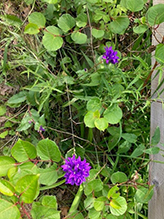 |
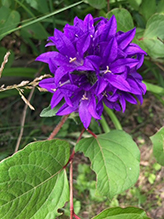 |
|
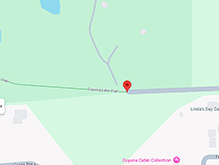 |
||
Luciearl |
||
Found on a fairly dense woodland area. Just one cluster of it. |
||
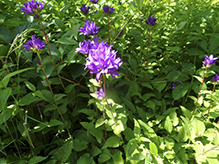 |
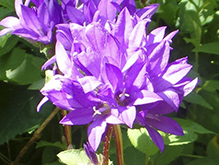 |
|
MinnesotaSeasons.com Photos |
||
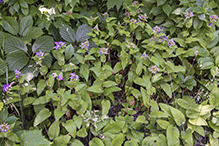 |
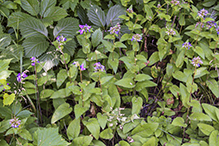 |
|
Plants |
Plants | |
 |
 |
|
Inflorescence |
Flowers |

Slideshows |
|

Visitor Videos |
||
Share your video of this plant. |
||
This button not working for you? |
||
|
Other Videos |
||
Campanula glomerata 1.mp4 |
About
Jan 29, 2016 Video del Centaurea Nigrescens Asteraceae: Fiordaliso nerastro - Seguici su www.traisassfiorii.it Google translation: Video of Centaurea Nigrescens Asteraceae: blackish cornflower (sic) - Follow us on www.traisassfiorii.it |

Visitor Sightings |
||
Report a sighting of this plant. |
||
This button not working for you? |
||
Carmen Tschofen |
Location: Cuyuna Country State Recreation Area At gate to bike trail 46°29'22.3"N 93°57'02.7”W |
 |
| Luciearl 6/9/2020 |
Location: Fairview Twp, Cass County Found on a fairly dense woodland area. Just one cluster of it. |
 |
MinnesotaSeasons.com Sightings |
||

Created: 9/23/2020 Last Updated: © MinnesotaSeasons.com. All rights reserved. |
